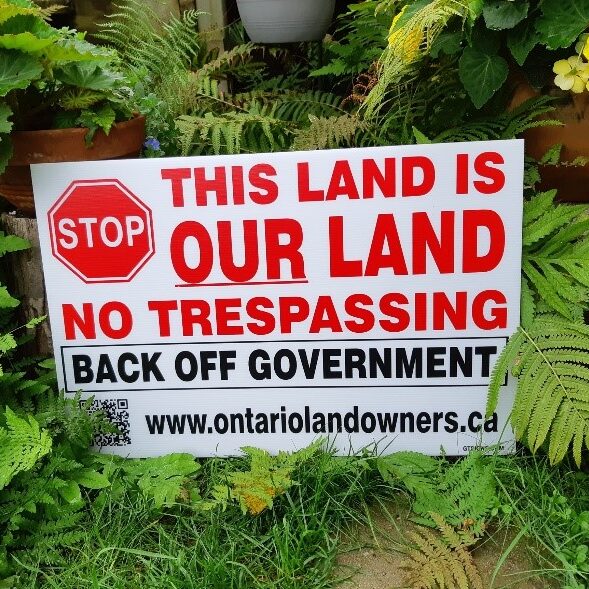The Cranberry Creek Mess-Up by Shirley Dolan
- 2018-05-01
- By admin
- Posted in Latest News

Shirley Dolan
On Monday, April 23, North Gower landowners attended a Court of Revision meeting to appeal assessments to upgrade the Cranberry Creek municipal drain. An engineer’s report completed in December 2017 was the basis for the assessments. Of the 300 households that received an assessment, more than 100 submitted an appeal.
I attended the meeting on Monday and although some may say that this is a case of residents not wanting to pay for a project that will benefit the community, there was much to suggest that this situation could have been handled better and landowners given better explanations about the project.
The cost of the $1.5 million project will be shared among the 300 landowners, the City of Ottawa, and the Ministry of Transportation (MTO), all of whom will “benefit” from the improvements to the Cranberry Creek municipal drain system. However, the landowners will pay the bulk of the cost.
Benefit is an important concept in the provincial Drainage Act. It is the basis for costs assigned to property owners. According to the Act, “benefit” means the advantages to any lands, roads, buildings or other structures from the construction, improvement, repair or maintenance of a drainage works such as will result in a higher market value or increased crop production or improved appearance or better control of surface or subsurface water, or any other advantages relating to the betterment of lands, roads, buildings or other structures. Here things get a bit sticky because some of the landowners don’t care or don’t want their lands drained. They don’t mind a bit of water in the spring.
In some ways, the story of Cranberry Creek has been a comedy of errors. This municipal drain has a long history. First constructed in 1895, improvements to the drainage works, new branches, and associated watersheds were addressed in 1953, 1969, and 1973. Around 1969, a dyke and a pump were installed to accommodate the higher levels of the Rideau River – higher because, some say, the River has filled in with silt and needs to be dredged. Parks Canada keeps the water high enough to accommodate pleasure boats and this appears to be too high to let the municipal drain empty naturally into the Rideau. Hence the pump to get the water over the dyke and into the River. (Parks Canada has not been asked to contribute to the upgrades to the drainage system.)
About 27 years ago, the pump went missing. The Ward councillor has stated that if the missing pump situation had been addressed at that time, it would have been at a much lower cost than today’s estimate. So, should the landowners be on the hook for mistakes made almost three decades ago?
It appeared to me that many of the assessments were being revised downwards because of information not considered when arriving at the fee. Of the forty or so appeals that I heard at the court of revision, many fell into this category. It begs the question, if so many assessments are being reduced, who pays for the shortfall to make up the difference?
There were rumblings of ineffective notifications, of people missed in the assessment, and of those unaware of the project and its affect on it.
It was also mentioned at the meeting that the MTO did not do a drainage study for the construction of 416 and should their share be higher because of this?
Another issue that was raised is the ongoing costs of the pump which is powered by expensive electricity.
There is a second session of the Court of Revision on May 7th. Landowners also have the right to appeal to a Drainage Tribunal.
Search:
Categories
Archives
- April 2024
- January 2024
- December 2023
- November 2023
- August 2023
- July 2023
- June 2023
- May 2023
- April 2023
- March 2023
- February 2023
- January 2023
- December 2022
- November 2022
- October 2022
- September 2022
- August 2022
- July 2022
- June 2022
- May 2022
- April 2022
- March 2022
- February 2022
- January 2022
- December 2021
- November 2021
- October 2021
- September 2021
- August 2021
- July 2021
- June 2021
- May 2021
- April 2021
- March 2021
- February 2021
- January 2021
- December 2020
- November 2020
- October 2020
- September 2020
- August 2020
- July 2020
- June 2020
- May 2020
- April 2020
- March 2020
- February 2020
- January 2020
- December 2019
- November 2019
- October 2019
- September 2019
- August 2019
- July 2019
- June 2019
- May 2019
- April 2019
- March 2019
- February 2019
- January 2019
- December 2018
- November 2018
- October 2018
- September 2018
- August 2018
- July 2018
- June 2018
- May 2018
- April 2018
- March 2018
- February 2018
- January 2018
- December 2017
- November 2017
- October 2017
- September 2017
- August 2017
- July 2017
- June 2017
- May 2017
- April 2017
- March 2017
- February 2017
- January 2017
- December 2016
- November 2016
- October 2016
- September 2016
- August 2016
- July 2016
- June 2016
- May 2016
- April 2016
- March 2016
- February 2016
- January 2016
- December 2015
- November 2015
- October 2015
- September 2015
- August 2015
- July 2015
- June 2015
- May 2015
- April 2015
- March 2015
- February 2015
- January 2015
- December 2014
- November 2014
- October 2014
- September 2014
- August 2014
- July 2014
- June 2014
- May 2014
- April 2014
- March 2014
- February 2014
- January 2014
- December 2013
- November 2013
- October 2013
- September 2013
- August 2013
- June 2013
- April 2013
- October 2012
- May 2012
- September 2011



